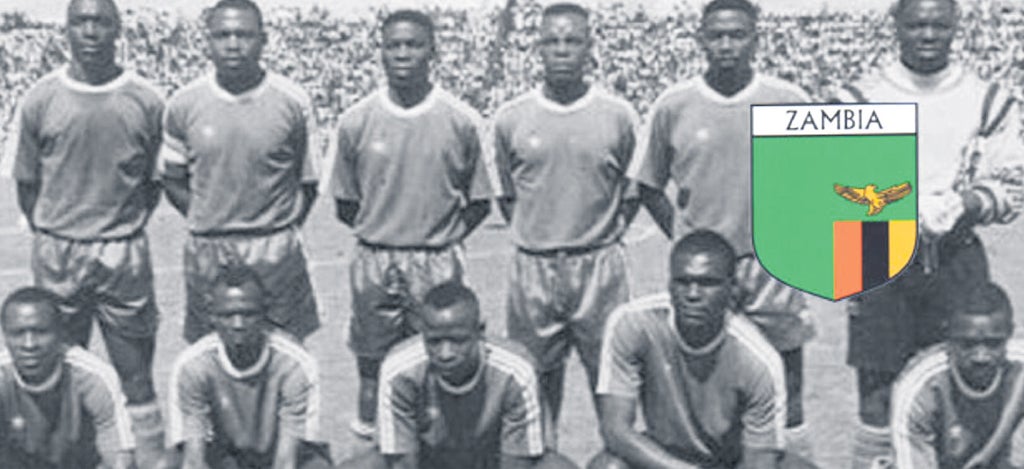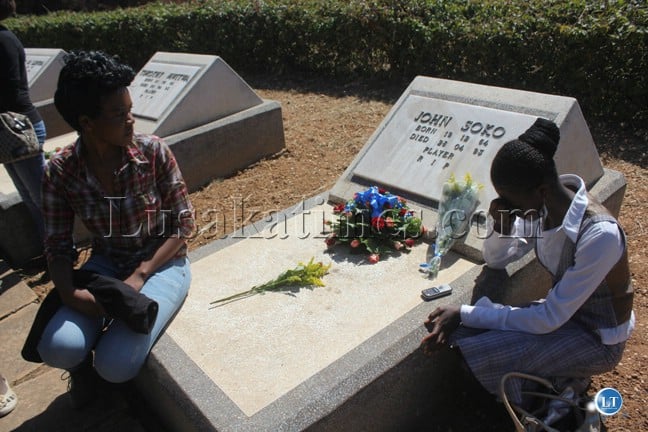
Friday marks the 25th anniversary of the 1993 Zambia plane crash. All 25 members of the Chipolopolo (The Copper Bullets) squad, including coaches, as well as five crew members died as they were travelling for a World Cup qualifier against Senegal in Dakar. The cause of the devastating crash was never established, but wiped out Zambia’s greatest ever generation.
The nucleus in Seoul – The Zambians formed the nucleus of their team at the 1988 Seoul Olympic Games. They topped Group B, trashing Italy 4-0 courtesy of Kalusha Bwalya’s hat-trick. Bwalya was crowned African Football of The Year in 1988, not just for his exploits on Korean turf, but for his consistency in field that included Roger Milla, Rabah Madjer and George Weah. He was the first Zambian to
A buzz around Zambian football – In the quarter-finals the West Germans dumped Zambia out of the Olympic tournament in emphatic fashion, 4-0, but the Copper Bullets didn’t relent, winning a bronze medal at the 1990 African Cup of Nations in Algeria. Zambian clubs also thrived on the continent: Nkana reached the final of the African Champions’ Cup, a precursor to the CAF Champions League – in 1990, and Power Dynamos won the African Cup Winners’ Cup the following year. There was a tangible buzz around Zambian football.
A 1994 World Cup dream – With depth in the squad and confidence high, Zambia nursed grand dreams. They coveted a ticket to the 1994 World Cup, hosted by the United States. They breezed through the first round of qualifying and were up against Senegal and Morocco in the final round in the African zone. Finishing top would ensure a ticket to the big time.
The fatal crash – The Zambians first had to travel to Dakar, the Senegalese capital. On April 27 April, 1993 they boarded the DHC-5D Buffalo aircraft in Lusaka. They’d never return. In an inexplicable tragedy, the team’s plan crashed into the Atlantic Ocean off the shore of Gabon, following a stop in Libreville. All 30 passengers were killed, and a team perished. Bwalya’s life was saved as he made his own way to Dakar, because of club commitments in the Netherlands in PSV.
Near qualification – Bwalya and Zambia regrouped, scraping together a new team, one that rose from the ashes like a phoenix and applied an admirable single-mindedness to make it to America. They weren’t experienced, they had barely played together, but, honouring the fallen players, they defeated the might Moroccans five weeks later in their group B opener. They drew with Senegal in Dakar and hammered them 4-0 at home. Needing just a point in Morocco, the Copper Bullets – and what would have been the most remarkable World Cup qualification in the tournament’s history – were undone by a 62nd minute goal from Abdeslam Laghrissi.
Nations Cup glory – But that was not to be end. Months before the 1994 World Cup, Bwalya and his team reached the final of Africa’s continental tournament. They didn’t win against the star-studded Nigerians, with Sunday Oliseh, Jay-Jay Okocha, Finidi George, Emmanuel Amunike, Daniel Amokachi, Victor Ikpeba and the late Rashidi Yekini, but captured the hearts and imagination of football fans.
Question marks remain – The horrific crash made a nation weep and ended the bright lives of highly gifted players, Zambia’s golden generation, but 25 years after the fatal day, a string of questions have not yet been fully addressed. Zambia is in its seventh government since the disaster, but the reports on the crash has not yet been released: What went wrong on the flight? Why did the team travel on a military plane? Was the Buffalo CT 15 simply not fit to fly? Why, after all these years, has the Zambian government not released the report outlining the causes and details of the crash?
By Samindra Kunti, AIPS







